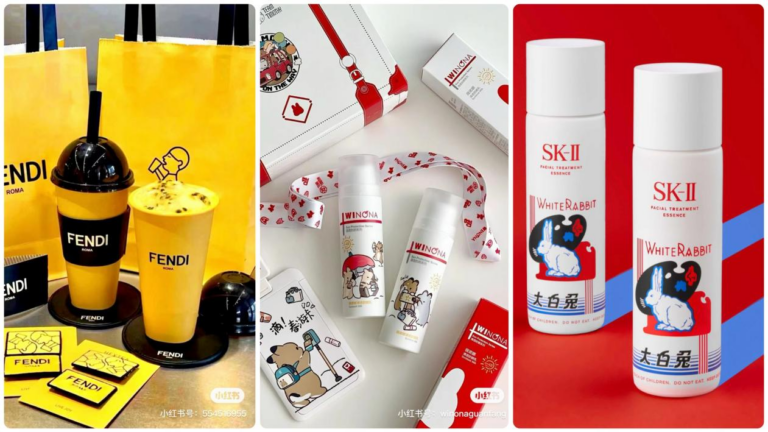While many industries are expanding globally, the origin of brands still matters. Brands from developed countries often have an advantage as they have a positive country-of-origin effect, which positively impacts consumers’ perception and purchase decisions. The 2022 Nation Brands Index measures countries’ global image, including the perceived attractiveness of their products. Through interviews with 60,000 consumers from 20 countries, they found that products from Germany, Japan, and Canada are the most sought-after. On the other hand, emerging countries might have a negative country-of-origin effect, which can be a competitive disadvantage. Despite China’s tremendous development in recent years, many people still associate the Made in China label with poor quality. The country-of-origin effect is particularly prevalent in the luxury market in China, with foreign brands still being in high demand, despite the trend of Guochao.
Download our report on the She Economy in China

Cultural stereotypes shape consumers’ perceptions and purchase intentions
Brand origin influences consumers’ perceptions
Chinese consumers often associate certain characteristics or qualities with luxury brands from specific countries. For instance, labels made in Italy closely associate with quality, while Swiss brands are synonymous with know-how, and aesthetic prowess. Beyond characteristics, product categories are also tightly linked to specific countries, which impacts Chinese consumers’ perception. Since France stereotypically associates with wine, Chinese consumers perceive French wine more favorably than Chinese or Australian wine.
The country-of-origin effect has an impact on purchase decisions
On top of influencing consumers’ perceptions, the country-of-origin effect has a significant influence over consumers’ attitudes and ultimately, their purchase decisions. Some Chinese consumers consciously or unconsciously gravitate towards luxury brands that can reflect their identity and differentiate them from others. The stereotypes associated with a brand’s country-of-origin can be a valuable way to target customers who have a positive perception of that country’s culture, history, and values. For example, the French luxury brand Chanel capitalizes on its Parisian origin, evoking images of romance and haute couture, which resonates with Chinese consumers seeking to integrate a touch of Parisian elegance into their lives.

How to manage the challenges brought by cultural stereotypes
The country-of-origin effect can also present unforeseen challenges for foreign luxury brands in China. Brands may encounter difficulties when stereotypes associated with their origin do not align with their intended image. One example is Volvo in China. Originally, the Swedish brand aimed to be perceived as a luxury brand car in the Chinese market. However, after the Chinese company Geely acquired Volvo, it is mostly perceived as a ‘safe’ car, less luxurious than competitors like BMW or Audi. The brand capitalized on its new image and positioned itself as the ideal choice for safety-conscious families, effectively leveraging this stereotype in its online advertisements.
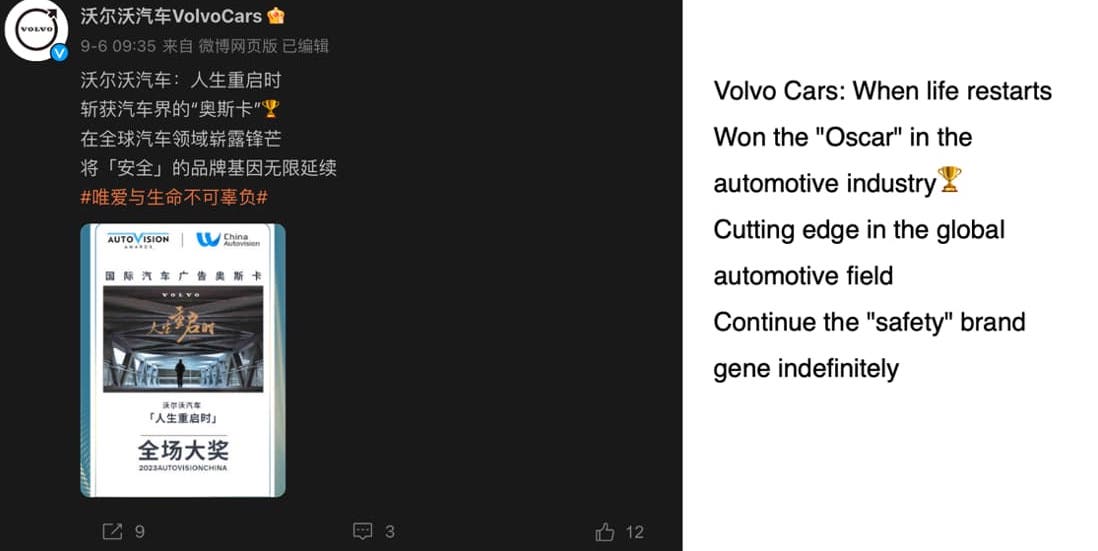
Navigating cross-cultural challenges
The delicate balance between adaptation and authenticity
When operating in the Chinese market, luxury brands must delicately balance adaptation to local Chinese culture whilst maintaining their authentic image. This involves thoughtful consideration of marketing and product strategies. This consideration is particularly important with the rising trend of Guochao in China. Young Chinese consumers are increasingly looking for brands and products that reflect their cultural pride. Foreign luxury brands, like Burberry, have hopped on this trend by blending elements of Chinese culture in their designs. For the 2023 Chinese New Year, they release limited-edition products adorning patterns that celebrate the Year of the Rabbit. This homage to Chinese culture blends seamlessly with its signature British style of clean and classic cuts and neutral color palettes, appealing to both tradition and modernity.
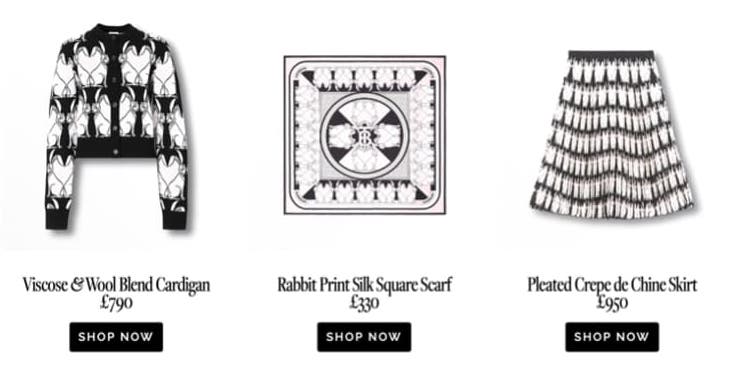
Cultural sensitivity
In their efforts to adapt to the local market, some luxury brands have released campaigns or products that were perceived as offensive or insensitive in China. Missteps can have serious consequences, as shown by Dior’s controversy over cultural appropriation. In 2022, the French luxury fashion brand Dior was accused of mimicking a traditional Song dynasty Chinese skirt(马面裙, literally ‘horse-face skirt)and claiming the originality of the design. On Weibo, many netizens encouraged the boycott of Dior and urged Chinese celebrities to cut ties with the brand. Similar cultural missteps have occurred in the past, with the infamous Dolce & Gabbana’s ad showcasing a Chinese woman eating Italian food with chopsticks, which was deemed ‘disrespectful and racist’ by Chinese.
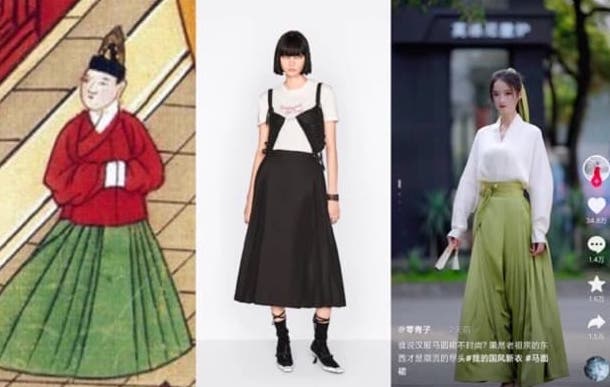
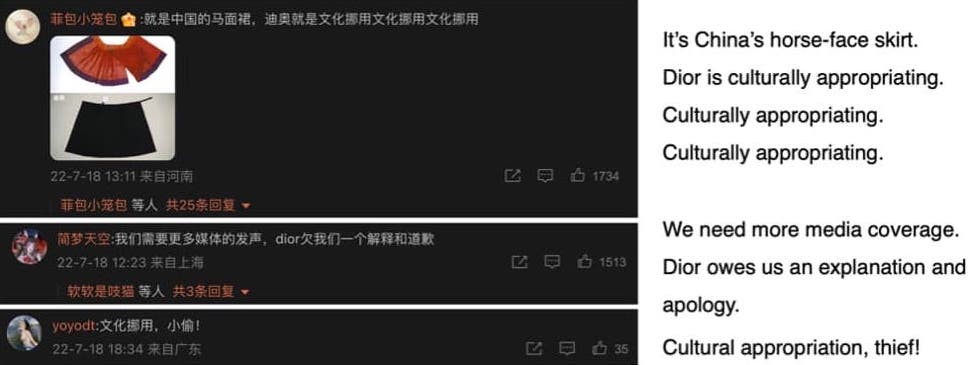

Practical implications in crafting a brand experience
Leveraging the country-of-origin effect is a way for foreign luxury brands to differentiate themselves from local brands. Nonetheless, certain elements of their operations require adjustment to align with the growing wave of nationalism.
Limited edition products
This adaptation might involve limited-edition products, tailored to traditional festivals. This approach has been widely used by foreign luxury brands like Louis Vuitton, who released special products for Chinese Valentine’s Day and Chinese New Year. These products are still very recognizable, adorning the famous designer logo associated with high-end fashion. At the same time, they tap into the cultural significance of these events and appeal to consumers looking for unique ways to showcase their Chinese heritage.
Local ambassadors
Collaborations with local celebrities are also a highly effective way to connect with Chinese consumers, as long as the influencers fit the brand image. For example, the luxury conglomerate LVMH has enlisted Chinese actress Dilraba Dilmurat as a brand ambassador. This not only boosts brand visibility but also resonates with Chinese consumers who relate to local celebrities more than foreign ones.
Retail space
Foreign luxury brands must also adapt their retail space to create immersive and relevant experiences. For example, the Burberry flagship store in Shanghai possesses unique features like digital screens that display personalized content based on customer preferences. This customization enhances the shopping experience and aligns with the preferences of tech-savvy Chinese consumers. At the same time, the store is still designed in a way that preserves Burberry’s essence, with its signature beige, red and black colors, and famous checked patterns. Foreign luxury brands should therefore be willing to adapt to Chinese consumers’ shopping styles to attract them.
Social media engagement
One of the main challenges for foreign luxury brands in the Chinese market is adapting to local social media platforms. The popular platforms include Weibo, WeChat and Xiaohongshu. Chinese social media is much more inclusive than in Western countries, offering comprehensive functionalities like live streaming, mini-programs, and games. In that regard, to engage with their Chinese audience, foreign luxury brands need to adopt different digital marketing strategies than they would in their home country. For example, Burberry has started live streaming on Tmall, one of China’s biggest e-commerce platforms. The brand has amassed over 1.4 million views in an hour. Understanding how to use local platforms to connect with customers is thus crucial for foreign luxury brands wishing to stay relevant in China.
What we can learn about the country-of-origin effect in China’s luxury industry:
- The country-of-origin effect is a significant factor in shaping Chinese consumers’ perceptions and purchase decisions in the luxury industry. Stereotypes associated with specific countries can be beneficial for foreign luxury brands in the Chinese market, but they can also present unforeseen challenges.
- As the trend of Guochao is still very present in China, brands must carefully balance between staying true to their roots and localizing to appeal to Chinese customers. In particular, when designing products or marketing campaigns, they must be careful of cultural missteps as they can tarnish the brand image in the Chinese market.
- By leveraging their origin’s allure, creating culturally relevant products, collaborating with local celebrities, enhancing the retail experience, and engaging in Chinese social media, luxury brands can effectively connect with and create a unique brand experience for Chinese consumers.




